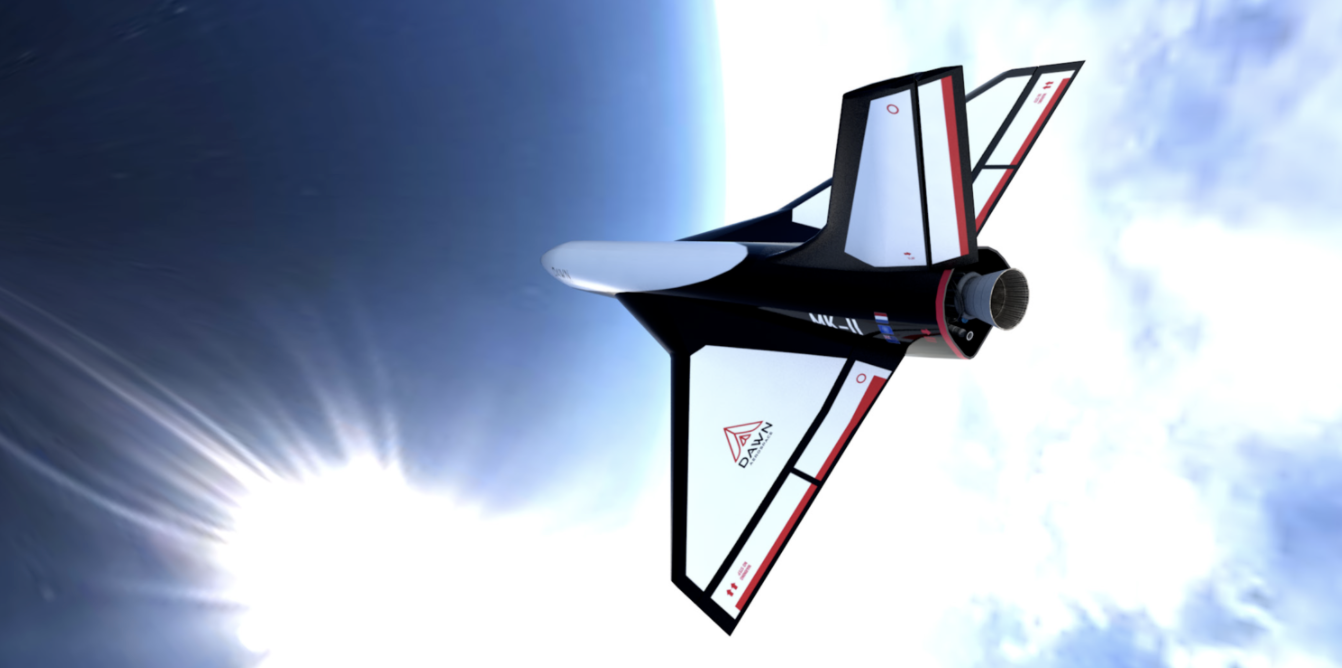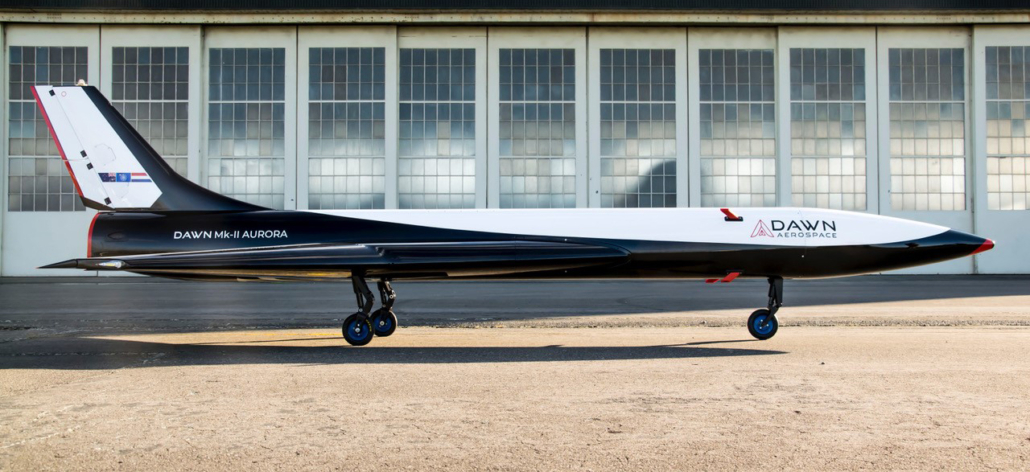
Doing up to thousands of spaceflights with just one aircraft: that is the goal for the Mk-II Aurora of Dawn Aerospace, a start-up company located both in Delft, the Netherlands, and in Christchurch, New Zealand. “That means we don’t need expensive factories to launch satellites,” says Jeroen Wink, co-founder, and CEO of Dawn Aerospace. “With just a small fleet of spacecraft, we are able to launch satellites daily and worldwide without disrupting the airspace or polluting the oceans.”
The next 12 months will see an intensive test flight campaign, the company says in a statement published on the occasion of the launch of the new spacecraft. Dawn Aerospace is in consultation with airports in New Zealand, Europe, and the United States in order to be able to operate worldwide in the future. For the first phase of the test program, the Aurora will be powered by traditional jet engines. Missile-powered flights, including scientific experiments to the edge of space, are planned for 2021.
Scale model with a modest payload

The Mk-II Aurora is the most recent version of a series of test aircraft with which Dawn Aerospace will launch satellites into space in the future. The Mk-II Aurora is Dawn Aerospace’s second rocket-propelled aircraft. The aircraft has the capacity to fly to the edge of space and then fly back to the runway autonomously. After landing, the aircraft only needs to be refuelled and can make a new space flight within a few hours.
The Aurora is a scale model with a modest payload. Although the payload is too small for a so-called “second stage”, it is sufficient to carry scientific experiments into space. The future Mk-III aircraft is based on the design of the Aurora, but will be a lot bigger. Enough to bring satellites of 50 to 100 kg into orbit around the earth using a second stage.
Flying from existing airports

Traditional rockets can only be launched from special launch locations and require sealing of the local airspace. Dawn Aerospace aims to operate its spacecraft from existing airports under existing aviation regulations and certification.
“The operational and logistical challenges surrounding a space flight are almost as great as the technical challenges of the vehicle itself,” says Tobias Knop, co-founder, and operations director. “So building smaller and cheaper rockets, as many companies try to do, solves only half of the problem.”
Earlier this year, Dawn Aerospace signed an agreement with the local administration of the Waitaki district in New Zealand to test flights from Oamaru airport.








